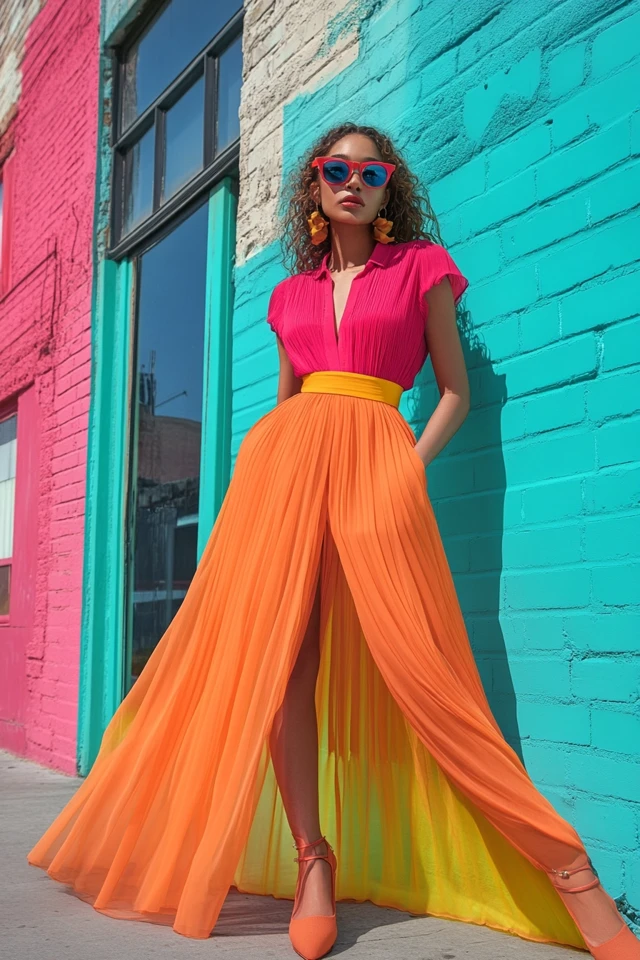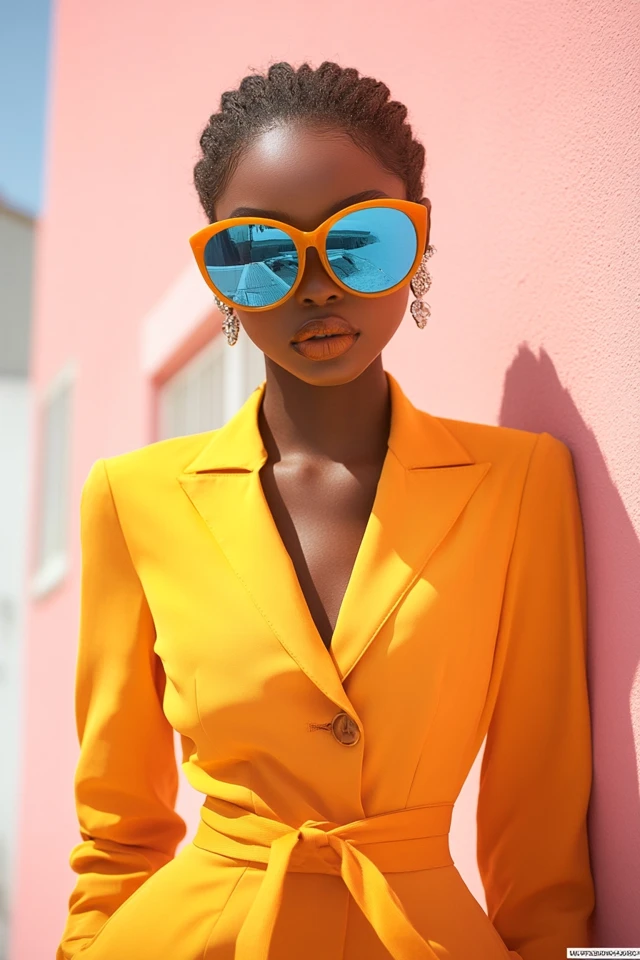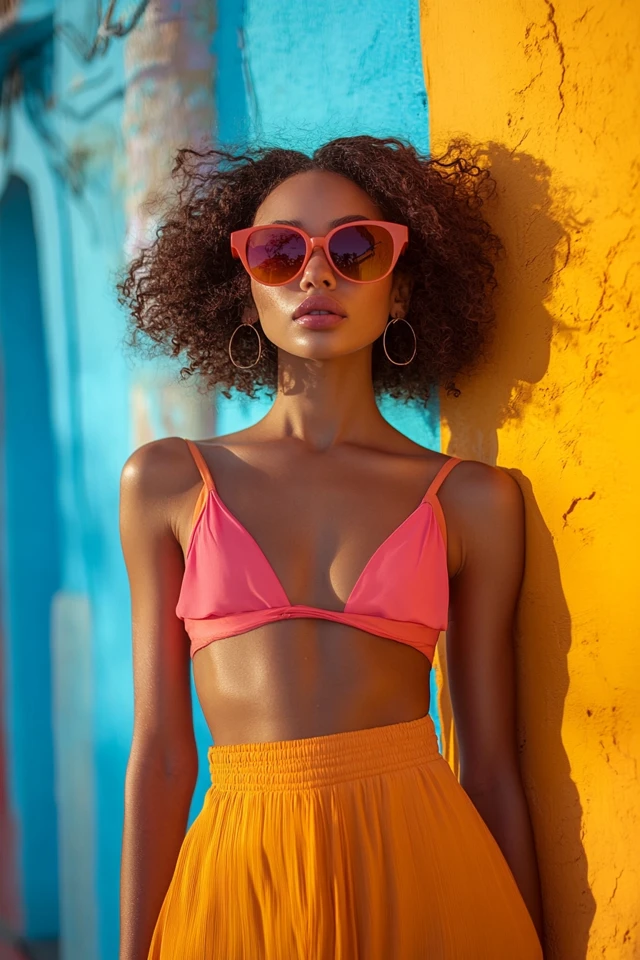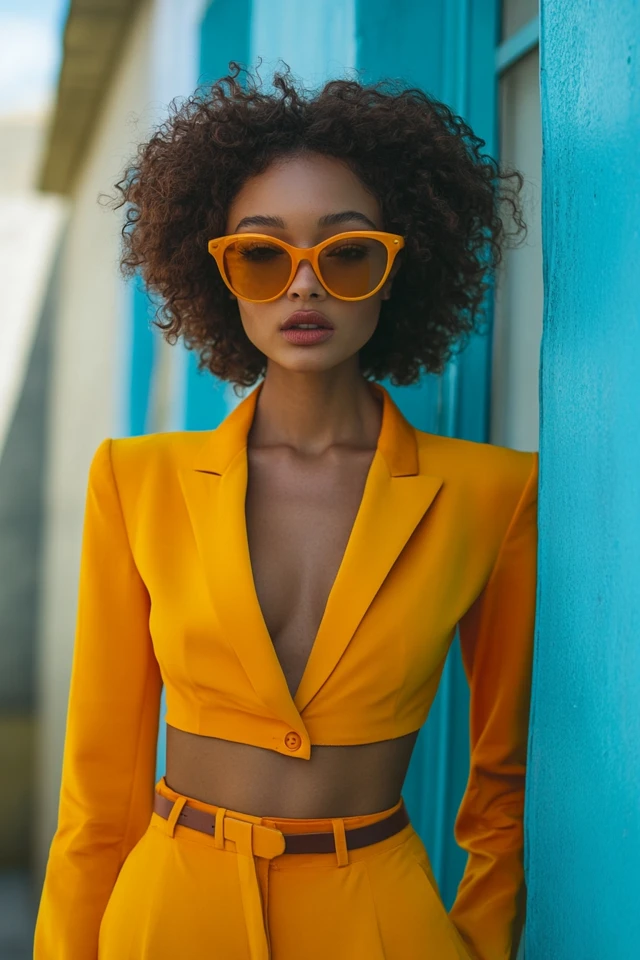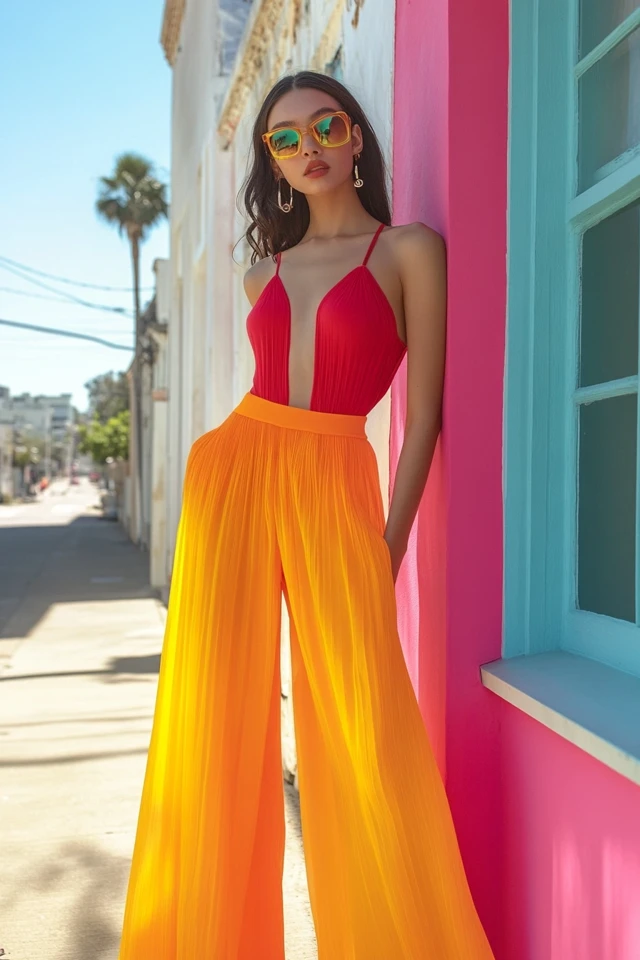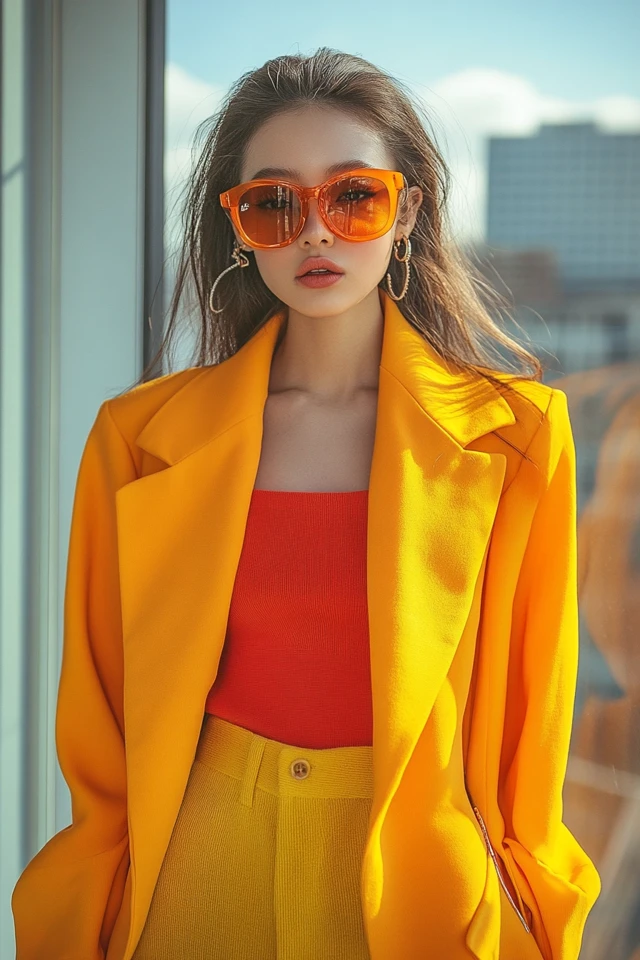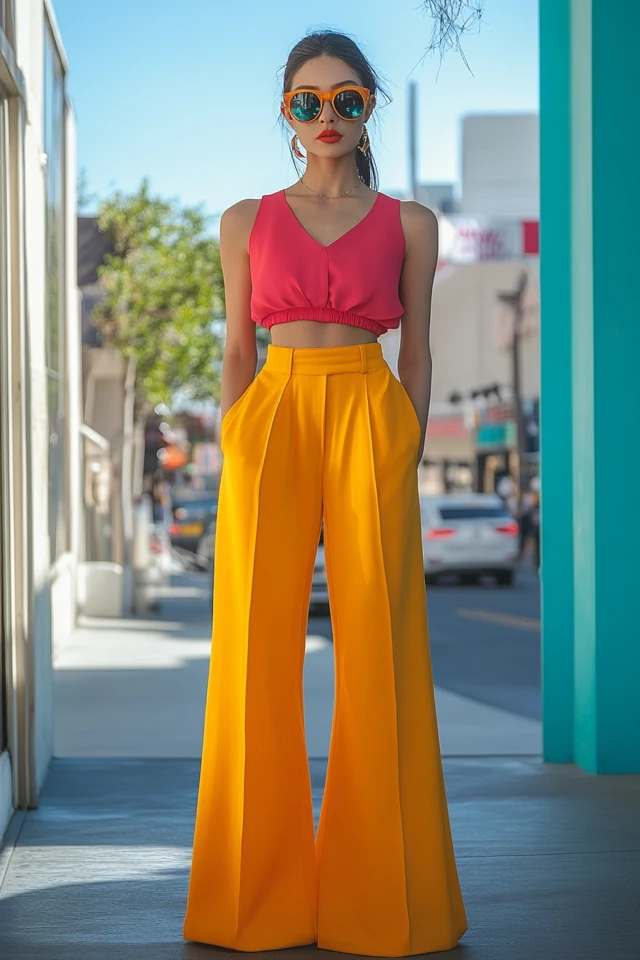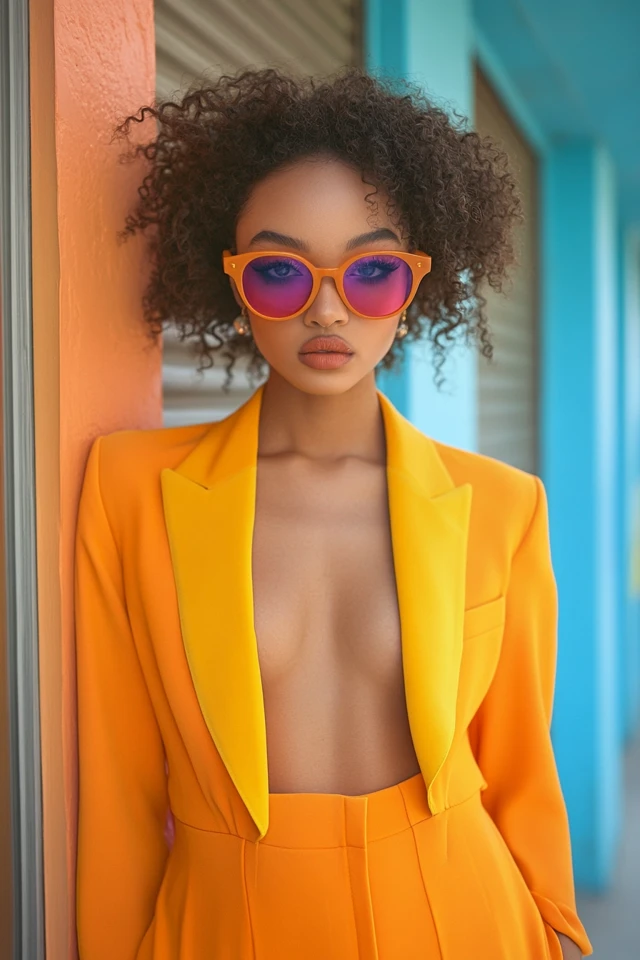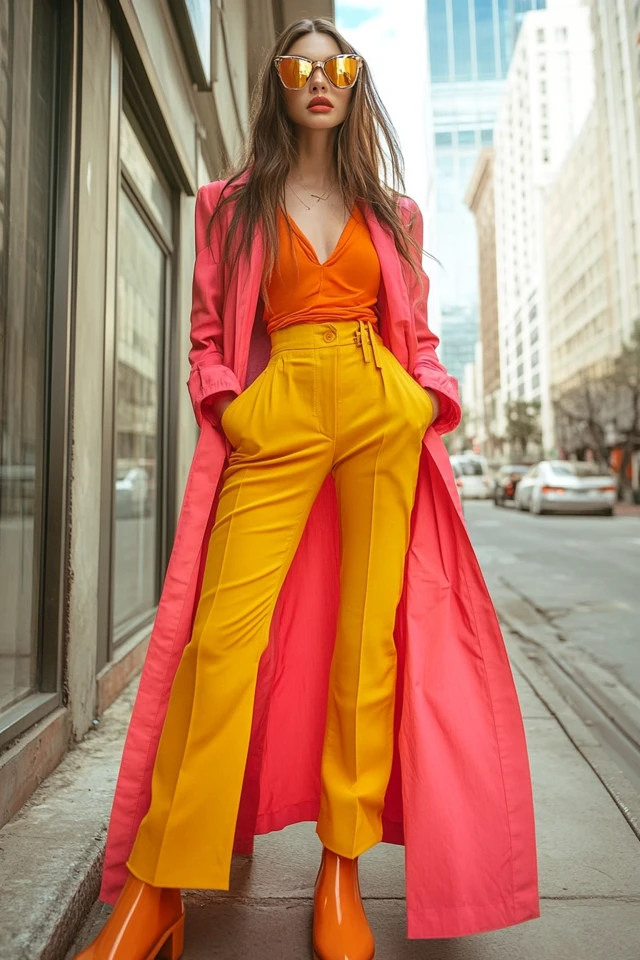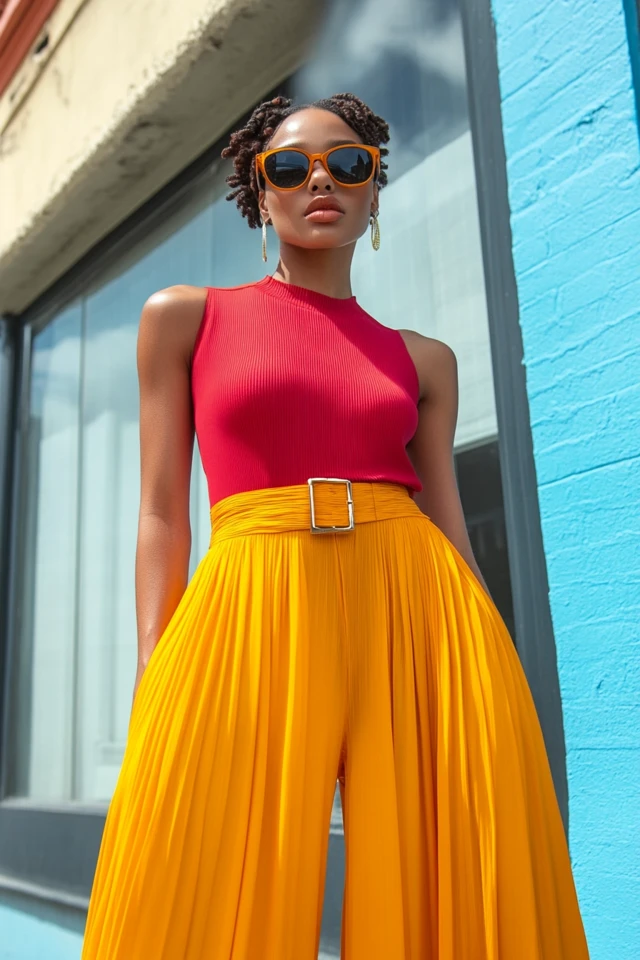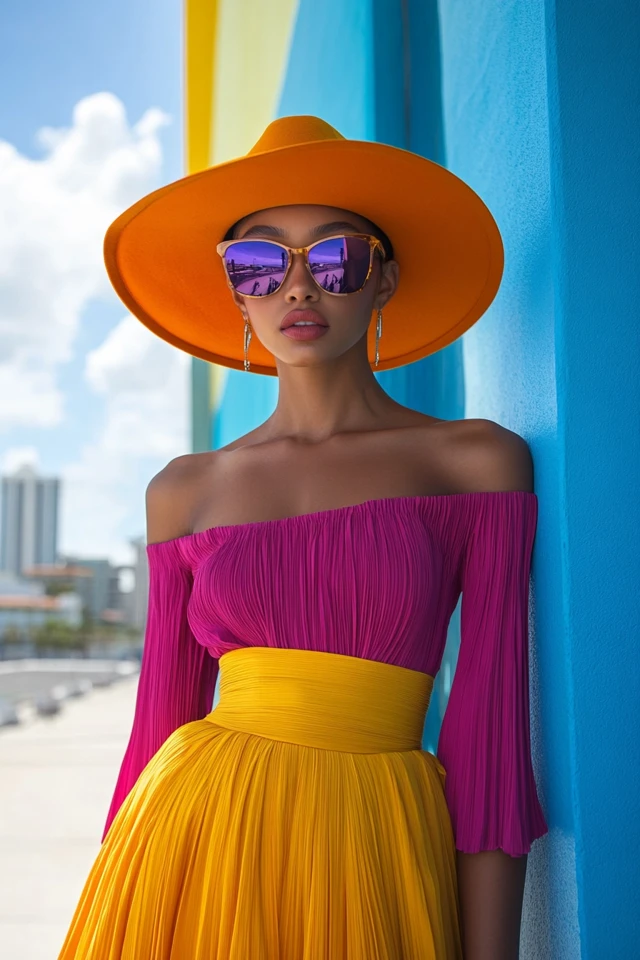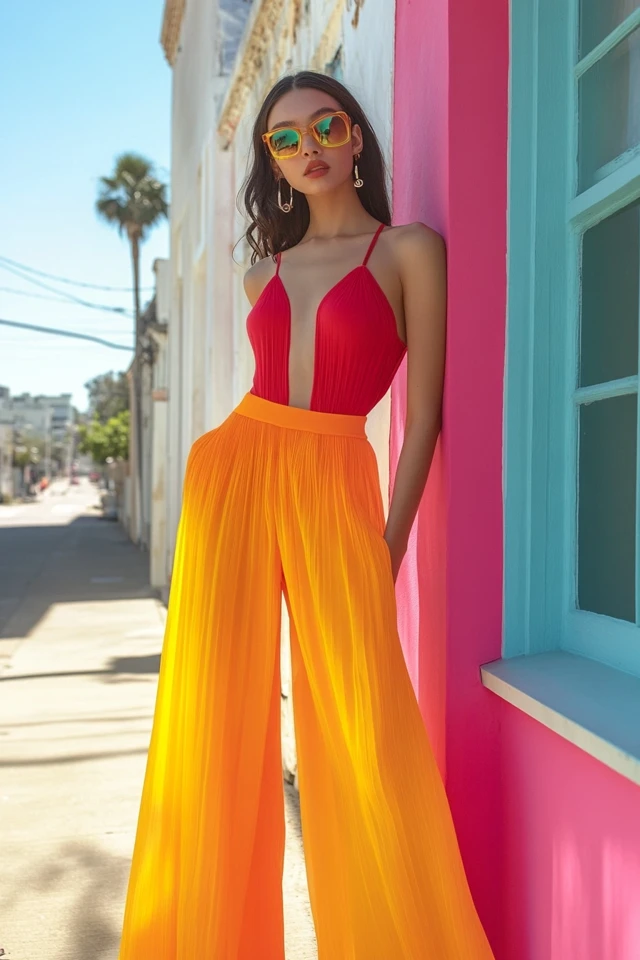Hello, fellow fashion enthusiasts! Have you ever stood in front of your closet, gazing at a rainbow of clothes but unsure how to mix and match those vibrant hues? I’ve been there, and let me tell you, mastering the art of color blocking transformed not only my wardrobe but also the way I express myself through fashion. Today, I’m excited to share with you my insights and tips on how to use bold color combinations to make your outfits truly stand out.
Introduction
Color blocking is a fashion technique that involves pairing solid blocks of contrasting colors to create a striking, vibrant look. It’s a powerful way to make a statement and showcase your personality. I remember the first time I experimented with color blocking—a bright yellow top paired with cobalt blue pants—and the compliments I received boosted my confidence immensely.
About the Author and My Trend Boutique
In this guide, we’ll delve into the fundamentals of color theory, explore how to create harmonious yet bold combinations, and provide practical tips to help you incorporate color blocking into your everyday style. Whether you’re a seasoned fashionista or just beginning to explore the world of bold fashion, this guide is for you.
Understanding Color Theory
The Color Wheel Basics
To master color blocking, it’s essential to understand the color wheel—a tool that artists and designers use to see the relationships between colors. The color wheel consists of primary colors (red, blue, yellow), secondary colors (green, orange, purple), and tertiary colors (a mix of primary and secondary colors).
Color Relationships
- Complementary Colors: Colors opposite each other on the color wheel (e.g., red and green, blue and orange). Pairing these creates a vibrant contrast.
- Analogous Colors: Colors next to each other on the wheel (e.g., blue, blue-green, and green). These combinations are harmonious and pleasing to the eye.
- Triadic Colors: Three colors evenly spaced around the wheel (e.g., red, yellow, blue). This creates a bold, balanced palette.
- Monochromatic Colors: Different shades and tints of the same color.
Understanding these relationships helps in selecting colors that either contrast or complement each other effectively.
Getting Started with Color Blocking
Start Small
If you’re new to color blocking, start by incorporating one bold piece into your outfit.
- Accessories: Use a bright handbag, scarf, or shoes to add a pop of color.
- Layers: Pair a colorful blazer over a neutral outfit.
Experiment with Neutrals
Combine bold colors with neutrals like black, white, beige, or gray to balance your look.
- Example: A bright red skirt with a black blouse.
Build Confidence
As you become more comfortable, start pairing two or more bold colors.
- Example: A purple top with mustard yellow pants.
Bold Color Combinations to Try
Classic Combinations
- Red and PinkA romantic and bold pairing that breaks traditional color rules.
- Styling Tip: Wear a red skirt with a pink blouse, and neutral accessories to balance the look.
- Blue and OrangeA complementary pairing that is vibrant and eye-catching.
- Styling Tip: An orange top with cobalt blue pants creates a striking ensemble.
- Green and YellowFresh and energetic, perfect for spring and summer.
- Styling Tip: A yellow dress with a green blazer adds a pop of color to your outfit.
Advanced Combinations
- Purple and YellowHigh contrast and bold.
- Styling Tip: Pair a purple skirt with a yellow top, keeping accessories minimal.
- Pink and OrangeWarm and lively, this combination exudes confidence.
- Styling Tip: An orange dress with a pink belt or handbag.
- Teal and RedUnexpected and chic.
- Styling Tip: Wear red trousers with a teal blouse.
Tips for Successful Color Blocking
Understand Your Undertones
Knowing whether you have warm or cool undertones can help you choose colors that flatter your skin.
- Warm Undertones: Opt for earthy colors like reds, oranges, and yellows.
- Cool Undertones: Choose jewel tones like blues, purples, and emerald greens.
Use Solid Colors
Color blocking works best with solid-colored pieces. Patterns can complicate the look.
Keep Silhouettes Simple
Let the colors be the focus by choosing clean, uncomplicated clothing styles.
Accessorize Thoughtfully
- Neutral Accessories: Balance bold colors with neutral shoes and bags.
- Colorful Accessories: Use accessories to introduce an additional color block.
Balance Your Look
If you’re wearing bright colors on top, consider more subdued tones on the bottom, or vice versa.
Incorporating Patterns and Textures
Mixing Textures
Combine different fabrics to add depth.
- Example: A silk blouse with cotton trousers.
Adding Patterns
If you’re feeling adventurous, incorporate patterns carefully.
- Tip: Stick to patterns that have the colors you’re already wearing.
Color Blocking in Professional Settings
Subtle Combinations
Use more muted tones for the workplace.
- Example: Navy and burgundy or forest green and mustard.
Classic Pieces
Choose traditional clothing items like blazers, pencil skirts, and tailored trousers in bold colors.
Minimal Accessories
Keep jewelry and accessories understated to maintain a professional look.
Seasonal Color Blocking
Spring and Summer
- Bright, Vibrant Colors: Embrace pastels and bright hues.
- Light Fabrics: Choose breathable materials.
Fall and Winter
- Rich, Deep Tones: Use colors like maroon, navy, and olive.
- Layering: Incorporate sweaters and coats in bold colors.
Personal Experiences
I recall attending a fashion event where I wore a bright orange jumpsuit paired with a turquoise statement necklace. The bold color blocking not only made me stand out but also sparked conversations. It was empowering to express myself so vividly through my outfit.
Another time, I paired a lime green skirt with a lavender top. Initially unsure about the combination, I received numerous compliments, which reinforced that experimenting with colors can lead to delightful surprises.
Conclusion
Color blocking is a fantastic way to inject energy and personality into your wardrobe. By understanding color theory and experimenting with different combinations, you can create outfits that are uniquely you. Remember, fashion is about self-expression, so don’t be afraid to step out of your comfort zone and embrace bold colors.
So next time you’re deciding what to wear, consider reaching for those vibrant pieces and have fun with color blocking. Your wardrobe is your canvas—let your creativity shine!
5 FAQs
1. Can anyone wear bold color combinations, or are they only for certain skin tones?
Absolutely, anyone can wear bold color combinations. The key is to choose colors that complement your skin tone. Experiment with different hues to see which ones make you feel confident and radiant.
2. How do I start color blocking if I’m used to neutral colors?
Start by introducing one bold color into your outfit, paired with neutrals. For example, wear a bright top with black pants. Gradually add more color as you become comfortable.
3. Can I incorporate patterns into color blocking?
Yes, but it’s best to start with solid colors. Once you’re confident, you can introduce patterns that include one of the colors you’re wearing to tie the look together.
4. Is color blocking suitable for professional or formal settings?
Yes, by choosing more muted or classic color combinations and traditional clothing pieces, you can create a professional color-blocked outfit.
5. How can I accessorize when color blocking?
Keep accessories neutral to let the colors stand out, or use them to add an extra pop of color. Just ensure the overall look remains balanced.
Picture Gallery
